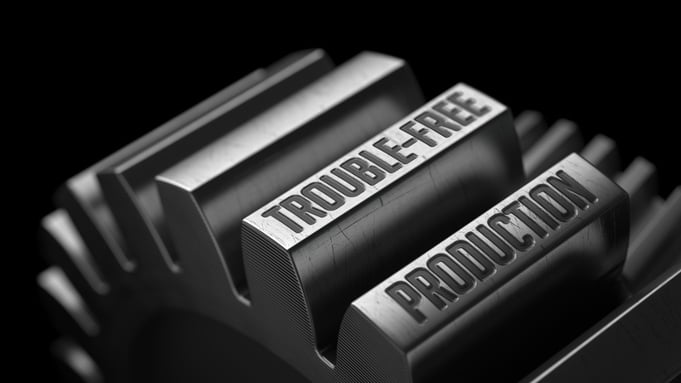
Cracking – in whatever stage of production – is a major loss issue faced within all types of clay manufacturing and the reduction/elimination is paramount for increased profitability and yields.
So what and where are the main areas which can lead to this problem:
- Reduced amount of plastic clays in the body.
- Too much water being used.
- The manufacturing of the articles.
- Drying techniques.
- Firing processes.
- Transportation and handling.
Therefore, throughout the whole manufacturing process there are areas where cracking can occur and as such manufacturers have continued to work very closely with not only their operations team, but also all their existing and new suppliers to find ways to reduce this problem – raw materials, capital equipment, automation, handling etc.
Clay is a very elastic product with a strong memory, but it is also a very dense material which requires the addition of inert/non-plastic components to “open the body up” and aid the passage of water during the drying process. If these non-plastics are removed, then the drying process would be extended far beyond the constraints of the factory. If you look at a mixture of differing high plastic clays, variations in particle sizes can lead to uneven drying as water may still remain trapped inside the clay matrix.
The manufacturing process includes soft and stiff extrusion, soft mud, water struck and handmade – to name a few – of which all these require water to aid production. If we look to reduce water addition in the extrusion process, this has been seen to have a detrimental effect in reducing the clay workability, increasing energy costs on the machine, increased column temperature which in turn can over heat the extruder leading to poorly extruded products. For the other three mentioned processes water is an integral part of the process and any water reduction will affect the quality and production rates of manufacture.
For manual setting those products which are still damp or have cracked during the drying process can be removed and reprocessed. However, for automatic setting machines these faults will not be noticed and can lead to continual downtime by either breaking over dried/cracked products or unable to pick up out of shape products due to misalignment of sensors.
Whether you are direct or indirect placing on the kiln car bases you need to ensure that the base is clean of debris, flat and true and with correct sensor alignment if automatic setting. It has been seen that the setting of products off centre – for reasons mentioned earlier – can give rise to inconsistent firings with some product being over fired, burnt or underfired. Furthermore, any products still wet and placed near the bottom of the set can give potential rise for a kiln wreck. The de-hacking process relies on perfect set hacks exiting the kiln after firing ready to be unloaded and packed on to pallets for distribution. Thus, if there have been any problems during the set or the firing, the robotic de-hacker will be unable to function correctly leading to excessive downtime.
Therefore, taking in to account all these possible manufacturing problems, it appears the best course of action to try to prevent cracking is looking at increased body strength, better and more uniform drying, possibility to reduce water additions and a more precise kiln set.
For increased body strength we can look at changing the body formulation but, as mentioned earlier, this can give rise to further production problems. Water reduction is a relatively easy first small step, but manufacturers need to be aware of some of the points mentioned previously.
To improve drying conditions it has been shown that if the correct air flow is circulating through the driers you can achieve a more even dry which in turn requires a good even setting of the product. If the product is too wet or out of specification against set tolerances can prevent this being fully utilized. Similarly, to achieve a good kiln set the products need to have been dried correctly and to the right moisture content coupled with a good clean true base to set the products on.
The use of clay conditioners has been seen by a number of manufacturers as a way of overcoming some – if not all – of these problems discussed above. These conditioners have been designed to improve both the wet and dry properties of the material. They have shown to increase the workability of the clay body without the need for more expensive high plastic clays and, at the same time, allow the reduction in added water as they act as lubricant promoting better flow of the clay particles when forces are applied and reducing friction between the body and the moving parts.
With better flow of the clay particles, the resultant structure of the clay mass is more even and cracking during drying are reduced. The reduced water addition means either less heat input for drying or faster drying cycles. As water begins to leave the clay product, the conditioner promotes an increased bond strength resulting in a faster rate of strength gain. This increased strength makes the product more resistant to handling stresses and, as such, reduces losses in the handling of wet articles. Furthermore, the increased strength after drying and tough outer surface protect vulnerable edges and reduces any reabsorption of moisture. With these increased strengths and better durability the products can be set more consistently on kiln cars allowing a better and even flow of heat during the firing process.
In conclusion, the use of clay conditioners can lead to greater efficiency in the process and the solution to a number of processing problems.
To know more about how to reduce cracks in your brick manufacturing process check out our ebook!





